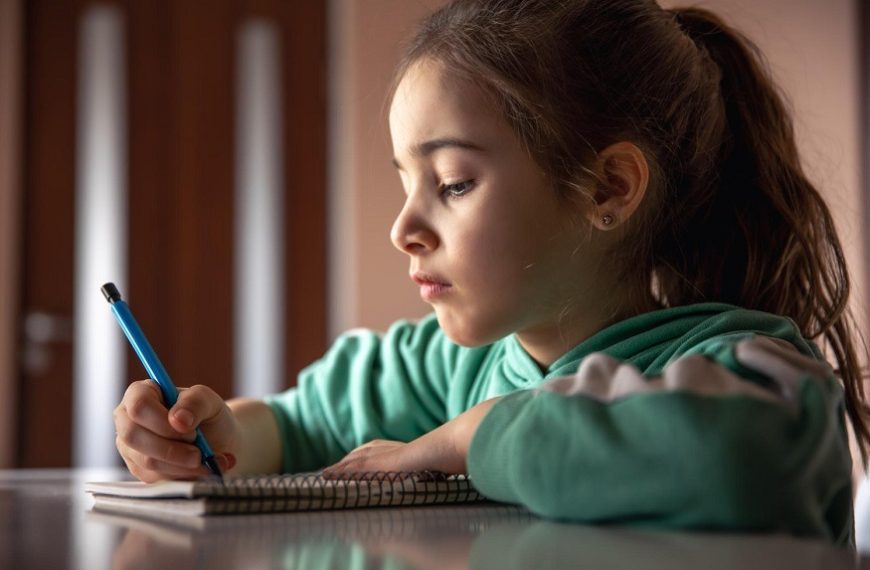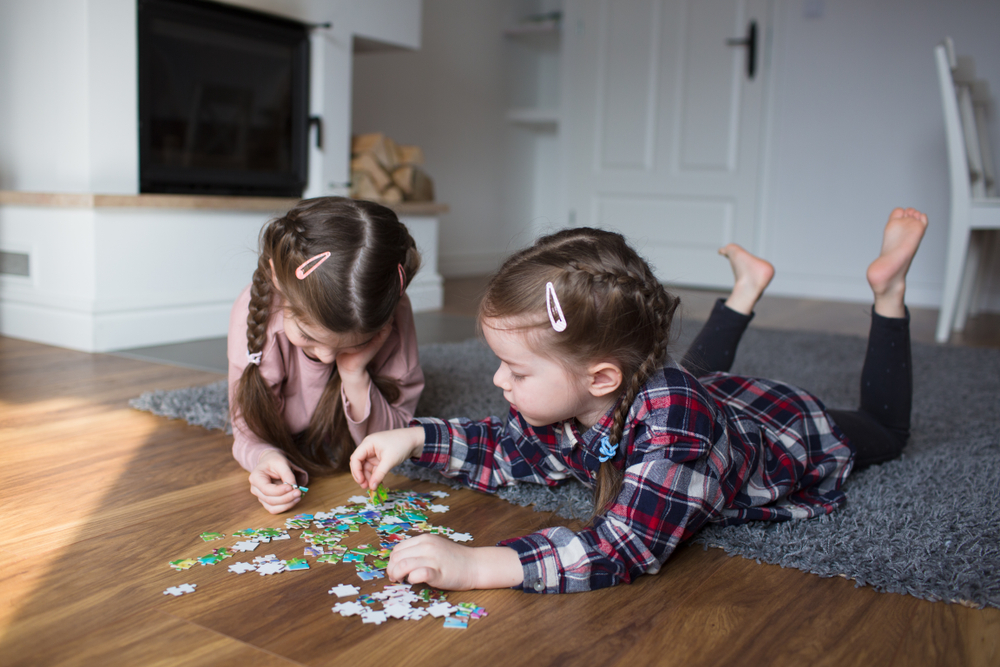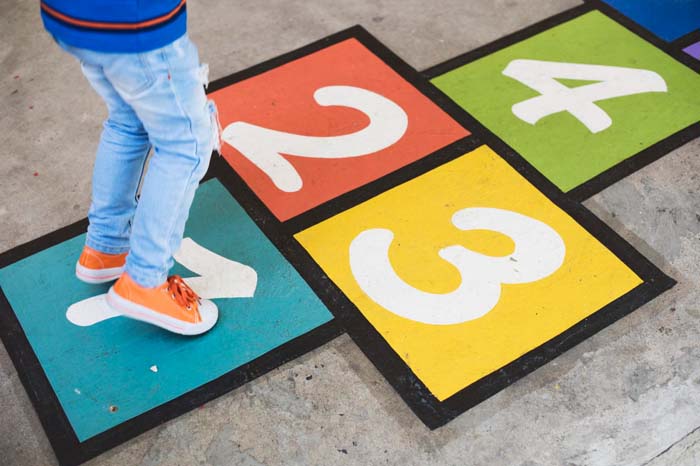A child’s imagination and self-expression are encouraged, and their reading abilities are strengthened via the use of creative writing, which is an effective technique. Encouraging children’s creativity in this digital age is more crucial than ever. This blog will go into the exciting realm of children’s creative writing, defining the term, sharing examples, and showcasing fun exercises to encourage the next round of storytellers.
What is Creative Writing?
Children may explore their creativity, feelings, and thoughts via creative writing, which is more than just writing words on paper. Writing poetry, tales, and narratives that enthral readers is an art. Encouraging children to express themselves via writing helps them think critically and solve problems. It also improves their language skills.
Creative Writing Examples
Let’s examine a few instances to have a deeper understanding of creative writing. Imagine a place where animals are able to communicate or an enigmatic island full of riches waiting to be found. These are the results of creative writing, in which a child’s imagination is the sole restriction.
- The Talking Animals Adventure:
- The Mysterious Island:
Once upon a time, animals gathered for a covert gathering in the centre of the magical forest. Oliver the Wise Owl had crucial news to make.
An ancient chart that pointed to an undiscovered island was discovered by Jack and Lily. They had no idea what magical experiences awaited them as they set off.
Why Creative Writing Is Important For Kids?
- Enhances Communication Skills:
- Fosters Imagination and Creativity:
- Builds Confidence:
- Develops Critical Thinking:
- Cultivates Empathy:
- Improves Academic Performance:
- Promotes Emotional Intelligence:
- Prepares for Future Success:
Children are encouraged to express their thoughts and ideas successfully via creative writing. They learn to communicate more effectively as they learn to express themselves verbally, which is a necessary ability for success in any endeavour.
The foundation of creative writing is imagination. Children develop creative thinking skills that they may use in many areas of their lives by creating characters and exploring fantasy worlds.
Children may see their ideas and thoughts come to life on paper when they write. This concrete illustration of their inventiveness boosts their self-esteem and makes them feel proud of their skills.
Planning, decision-making, and problem-solving are all necessary while crafting a tale. Children who write creatively learn to manage the intricacies of character interactions and story development.
Children become immersed in the stories they hear, experiencing a range of emotions and viewpoints. This encourages empathy, which enables individuals to comprehend and relate to people more deeply.
Academic success and creative writing proficiency are favourably correlated. It improves understanding, grammar, and vocabulary, laying a solid basis for all academic success.
Children can explore and express their feelings via writing. In addition to enhancing their general well-being, emotional intelligence gives them the tools necessary to negotiate the intricacies of relationships and self-awareness successfully.
Children who get creative writing instruction are better prepared for success in the future in a society that prizes innovation and originality. Creative thinking is an important skill, regardless of one’s career path— it may be used in writing, science, or entrepreneurship.
Creative Writing
After taking a peek at the fascinating realm of creative writing, let’s examine ways to help children develop this talent.
- Encourage Freewriting
- Promote Visualization
- Use Creative Writing Prompts
Please give them a blank notebook and encourage them to write without regard for proper language or sentence structure. This frees their minds to think whatever comes to mind.
For instance: “Today, my pet dragon and I travelled to the moon.” We found a sugar planet and danced under the sky!”
To help children visualise a scenario before they put words to it, encourage them to close their eyes. This aids in the improvement of descriptive writing abilities.
For instance: “Envision a mystical garden where butterflies play hide-and-seek and flowers sing.” Could you explain what you’re seeing?”
To generate ideas, introduce creative writing prompts. “If you could have any superpower, what would it be?” is one example. This inspires creative thinking and narrative.
Example: “Emily found a magical bracelet that allowed her to travel back in time. What experiences would she encounter, and where would she go?”
Creative Writing Topics
Investigate a range of creative writing subjects to keep students interested in and enthusiastic about writing.
- Fantasy Adventures
- Time Travel Tales
- Space Exploration
Take children on fantastical adventures where they may build heroic heroes, magical animals, and grandiose missions.
For instance: “Write a story about a friendly dragon who helps a lost kitten find its way home.”
Encourage children to investigate various eras to pique their interest in history and inspire original thought.
As an illustration, consider having a time-traveling pen. Write out the questions you would want to ask and the historical figure you would like to meet.”
Enable children to dream about travelling beyond space and meeting aliens to spark an interest in the universe.
For instance: “Craft a story about an astronaut who discovers a new planet and the unexpected inhabitants living there.”
Creative Writing Format
It is essential to comprehend the framework of creative writing. Although children should be allowed to be creative, giving them a simple structure aids their mental organisation.
- Introduction
- Body
- Conclusion
Introduce the primary concept, the environment, and the characters to establish the scene.
For instance: “In the quaint village of Everland, where magic lingered in the air, lived a curious girl named Lily.”
Plot development requires interesting developments, conflicts, and resolutions.
For instance: “One day, Lily discovered a mystery key that opened a secret door situated inside the old oak tree. She could never have imagined what was waiting for her.”
Close the tale and leave the audience feeling either satisfied or curious.
Example: “Lily entered a realm full of talking animals and never-ending adventures as she walked through the door. Her voyage into the unknown has only just begun, therefore.”
Expert Tips To Develop Creative Writing Skills In Your Child
The following are some strategies you may use to support your child’s creative writing development:
- Create A Writing Environment:
- Use Writing Prompts For Practice:
- Encourage Journal Writing:
- Use Visual Images For Prompts:
- Teach Them About Working In Drafts:
- Please Encourage Them To Read:
- Emphasise Character Development Before Writing The Story:
- Sign Up For Online Creative Writing Classes:
- Keep A Dictionary Handy:
- Journaling:
Your youngster requires a writing area of their own. Arrange a room to accommodate a desk or table with a smooth, level surface. Make sure the lighting in the room is enough.
Writing prompts will help your child develop their creative writing abilities by guiding them to write about a specific subject in a particular way.
Keeping a journal is very beneficial for children who are beginning to write. Asking your child to write in their diary every day about the good and bad parts of their day is the most excellent method to promote journal writing.
Using visual writing prompts to help your child come up with ideas and thoughts for their writing is a fun method to keep them interested.
The phases in the creative writing process include putting thoughts on paper, proofreading for grammar and flow, fixing spelling mistakes, reviewing, and editing. Teach your youngster the value of a drought as the process that leads to a flawless article.
Studies indicate that those who read a lot also often write well. When a youngster learns to read, they are introduced to new words and gain knowledge about their usage and context. They can appropriately employ the new terms in their writing once they have added them to their vocabulary.
A tale needs to be able to engage readers on a deep level. As a result, it is crucial that your youngster understands the value of character development and gives it careful thought while writing.
Enrolling your youngster in online creative writing lessons will help them discover new things and broaden their perspectives. Your kid will get an understanding of the craft of creating engaging material with the aid of various themes, tools, and strategies.
Your child should have a resource they may consult for clarification when they are unsure about a particular term. They may learn the definition of the term and the context in which to use it in their writing with the aid of a dictionary.
Related Reading Topics and their Benefits:
A journal serves as a confidential confidant where children freely articulate emotions and introspections without judgment. This private written dialogue encourages authentic self-discovery and maturation.
Benefits: A journal functions as a sounding board to nurture emotional growth and literacy skills. Through private self-dialogue, feelings become clarified. Thoughts grow organized. Vocabulary expands to capture nuances. In essence, journaling provides therapy on the page to boost development.
Personal Time Capsule Letters:
A time capsule preserves the present for posterity. This activity has children pen epistles to their future identities, documenting present-day realities, aspirations, and unknowns they wish their older incarnations to reflect on. It freezes in time a portrait of who they are now.
Benefits: This reflective exercise has children examine their inner lives and put desires into words. Articulating present dreams and confusions helps shape identity. Visualizing future fulfillment can breed optimism. When the time capsule unseals years onward, reading their bygone impressions elicits emotions. Growth becomes tangible. Youthful optimism materialized or evolved. Core aspects persisted through time’s passage. This poignant juxtaposition of selves across eras sparks perspective and meaning.
- Use Creative Writing Prompts:
- Picture Storytelling:
- DIY Comic Strips:
- Outdoor Observation:
- Letter To A Hero:
- Recipe Writing:
- Story Cubes:
- Newspaper Reporter:
- Book Reviews:
A mere sentence transforms into an odyssey of the imagination! Creative writing prompts catalyze these voyages. They launch literary adventures, spurring young authors to infuse mundane phrases with intrigue and enchantment as compelling tales take form. The journey unfurls with each successive line as emerging narratives surge ahead, imbued with dramatic tension, vivid scenery, and colorful characters. Such small sparks cultivate creativity.
Benefits: These imaginative launches inspire young minds to soar beyond boundaries. By igniting innovation, they sculpt inventive literary skills. Budding authors hone stylistic originality while assembling nuanced vocabularies to assemble rich tapestries threaded with intricate narratives. So prompts unfetter children’s creativity, emboldening storytelling with distinctive perspectives.
Visuals convey myriad impressions, which written interpretations unpack through meticulous description. By elucidating imagery with precise prose, budding wordsmiths awaken attention to subtle essence and aspect.
Benefits: This descriptive exercise hones observation and communication faculties. Studying images kindles an investigative mindset, challenging young analysts to decode intimations. Translating such findings into cogent passages exercises clarity of thought. Budding scribes must discern subtle clues within frames and then illuminate insights through discerning prose. Overall, this activity cultivates perceptive interpretation and articulate expression.
Crafting comics awakens superpowers of imagination and narrative direction! Budding illustrators and wordsmiths intertwine visual and literary skills to propel episodic adventures. Devising vignettes, designing unique heroes, and navigating plot direction channels creative thinking. Children shape stories panel by panel, mobilizing mighty talent within magical speech bubbles and thunderous action captions!
Benefits: Comic creation mobilizes multiple muses, fusing literary and artistic gifts. Weaving sequential images with punctuated prose compels economical eloquence. Visually unveiling unfolding adventures teaches how art amplifies and pace progresses plots. Youthful visionaries learn dialog and imagery interdependence through this vocabulary of frames and speech bubbles. Inventing episodic sagas thus trains innate talents.
Observing and chronicling the natural realm bonds children to surrounding wonders. Through descriptive prose ramblings, budding naturalists befriend flora and fauna, documenting meandering encounters with observant pens. Each entry preserved etches an experiential imprint, carrying the outdoors’ restorative magic back home.
Benefits: This reflective exercise bonds young spirits to nature’s sublime gifts. It nurtures environmental appreciation through mindful observation of nuances and studious journaling of findings. Budding naturalists hone acute viewing skills while assembling descriptive inventories of discovered treasures. Cataloguing reams of delicate details and profound impressions promotes both literacy and an affections for the outdoors.
Penning notes of appreciation to beloved luminaries allows young hearts to articulate praise. By directly conveying their profound gratitude, children gain courage to contact inspirational figures, forging uplifting connections. This act of magnanimity builds character while spreading goodwill.
Benefits: This sincere expression promotes gratitude’s nobility while refining eloquent communication faculties. Crafting homages challenges budding orators to convincingly transmit profound appreciation. Exercises in emotional intelligence teach respectful transmission of praise, bringing youthful hearts closer to luminous figures impacting society. Overall, it builds virtue and skillfulness.
Concocting homemade delicacies evokes images of bubbling cauldrons and secret ingredients! Budding chefs playfully channel inner sorcerers, measuring special ingredients and casting food preparation spells. Following steps precisely keeps the kitchen magic working so yummy concoctions materialize for all to enjoy. What fun escapades await these imaginative recipe writers and intrepid taste testers!
Benefits: This creative endeavor demands meticulous measurement notation and lucid procedural direction, thus reinforcing key literacy and STEM competencies. To perfect their culinary design blueprints, fledgling food scientists must comprehend execution of mathematical conversions and proper sequencing of preparation steps. Such decoding and encoding of vital information consequently strengthens the flow of logic and numerical faculties.
Story cubes function as whimsical muses, their pictorial faces sparking episodic adventures with each roll’s randomized result. Fabricating these imagination ignition tools begins simply: illustrate narrative inspiration onto cube templates or adhere stickers. Then conjure tales springing from the images tossed by fate’s fickle hand! Where might such visionary cues transport fledgling story spinners? The journey unfolds with delighted gasps and scribbled observations as young authors record the spontaneous unfolding.
Benefits: These pictorial dice catalyze imaginative journeys through improvisational storycraft. Randomized rolls compel ingenious thematic integration, as young minds nimbly thread disconnected visual cues into unified sagas. Weaving rich verbal tapestries on the fly exercises nimble ideation while expanding descriptive faculties. Budding wordsmiths access expansive vocabularies to articulate the wildly unpredictable adventures inspired by such curious cubes.
Budding journalists glimpse the inner workings of news media through immersive writing that educates community members. By covering real events with dedication and accuracy, young scribes receive firsthand experience assembling compelling stories that inform and connect citizens. This hands-on opportunity provides curious minds a window into the field while honing communication skills.
Benefits: This immersive writing exercise infuses nonfiction narratives with literary panache. Budding reporters master journalistic conventions, sourcing relevant happenings to anchor inventive articles. Factual foundations harness imagination, yielding unique compositional styles blending information and intrigue. Thus fact-based writing fertilizes creativity’s blossoming while strengthening communication abilities.
While reading is great, discussing what you’ve read is much more beneficial. It fosters critical thinking and thought sharing in children.
Benefits: This analytical exercise nurtures discernment faculties. Budding critics must first comprehend intricate literary workings before appraising merit through reasoned debate. Crafting nuanced evaluations demands thoughtful articulation of impressions to support stances. By producing lucid summaries and judgments, young reviewers broadcaster opinions while exemplifying how evidence grounds bold viewpoints. Overall, the journey enriches reading, writing, and reasoning abilities.
Children who are proficient in creative writing have access to a world of opportunities beyond merely talent. It increases communication, encourages creativity, instills self-assurance, sharpens critical thinking skills, develops empathy, raises emotional intelligence, boosts academic achievement, and prepares students for future success. By giving children the resources and support to use writing as a creative outlet, we enable them to become the creators of their own narratives and, in the end, the designers of their own lives.














